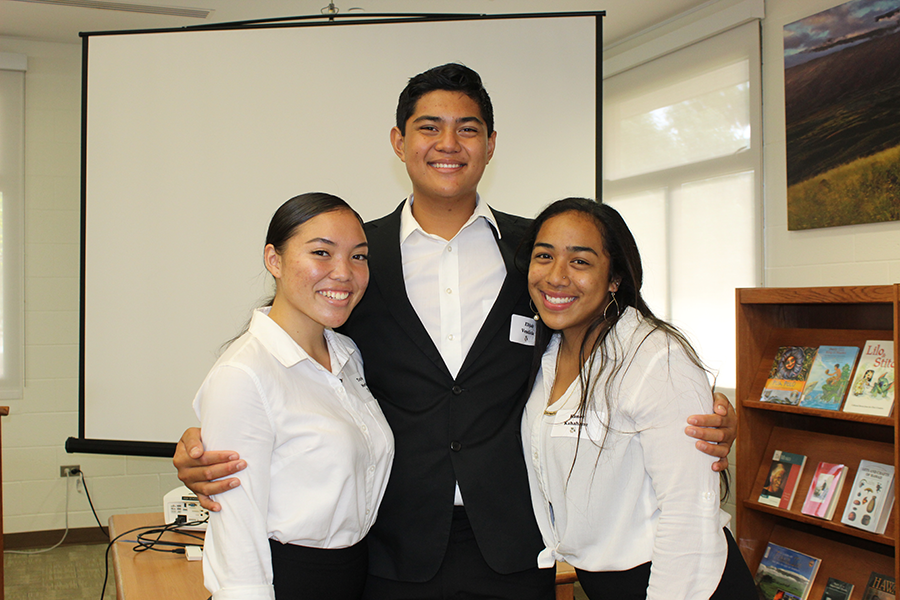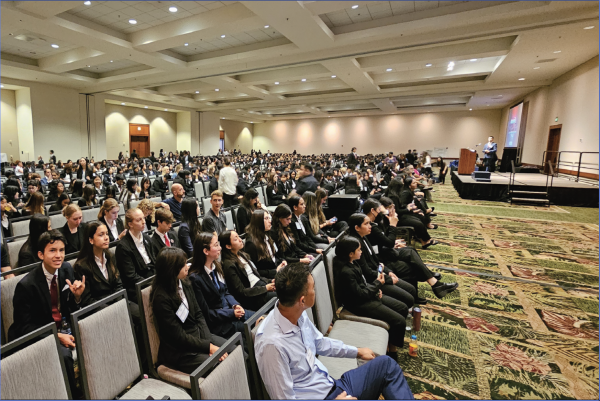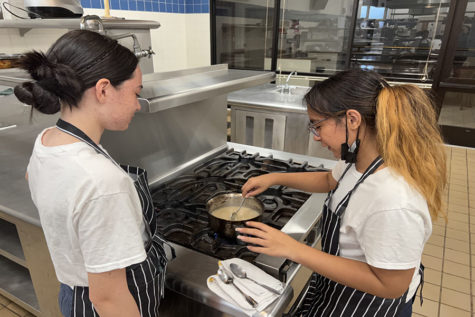New senior Hōʻike Nui debuts
Photo by Lauren Kalama
Seniors Taylor Morita, Elijah Vendiola, and Janae-Mika “Kanoe” Kahahane are all smiles after finishing their Hōʻike Nui presentations, Friday, November 8. After a stressful day presenting to staff and the community, seniors were treated to ice cream in Keʻeaumokupāpaʻiaheahe.
Kamehameha Schools Maui High School debuted a new approach to senior Hōʻike Nui projects this year, which culminated in most of the seniors presenting their projects to panels of staff and community members yesterday.
“This year, students could choose to complete a design thinking project,” hope poʻo kumu Mr. Leo Delatori said. “The design thinking process has a different outcome from the traditional research and project that we have been doing in the past.”
Design thinking is a process of creative problem solving. To learn more about it, click here to go to the Interactive Design Foundation website.
The traditional route, which included writing a 7- to 10-page research paper, used to be the only choice for students.
“The Hōʻike Nui is a research paper and product [or project] designed by the student that demonstrates their in-depth understanding of a particular area of concentration,” Mr. Delatori said.
Along with adding the new choice of approach to the Hōʻike Nui and overhauling the scoring rubric, the school also invited over 100 community members to watch and score presentations on Friday.
“We are really excited to have our community play a bigger part and role in our Hōʻike Nui presentations as community panelists–many of whom have served as mentors for our students, whether it be through internships or their actual Hōʻike Nui projects,” poʻo kumu Ms. Jay-R Kaawa said.
There were four sessions of presentations throughout the day. Senior students were assigned to a review panel consisting of community members, faculty, and staff.
“I was just so overwhelmingly impressed,” said Ms. Jaimie Dukelow, Hawaiʻi State Federal Credit Union relationship officer, who served as a panelist.
Seniors had been preparing for this day since the beginning of their junior year.
“Although I was nervous to present in front of many adults, I was able to calm myself down because I knew how much we have been waiting for this,” senior CJ Hamasaki said.
Passing this phase of their projects brings them one step closer to graduation as it is a requirement for commencement, but it is a requirement whose form is transforming.
Much like the design thinking process, this yearʻs changes were just one step to further iterations of the project in coming years.
Looking back on his experience, Hamasaki said that students should “not only look at it as a project, but look at it as a way to learn more about the community and yourself.”









